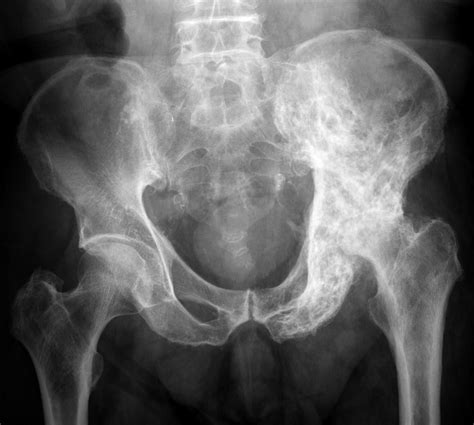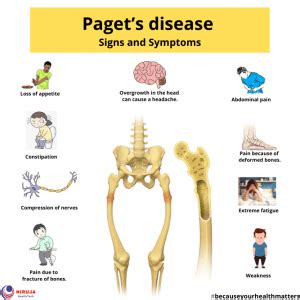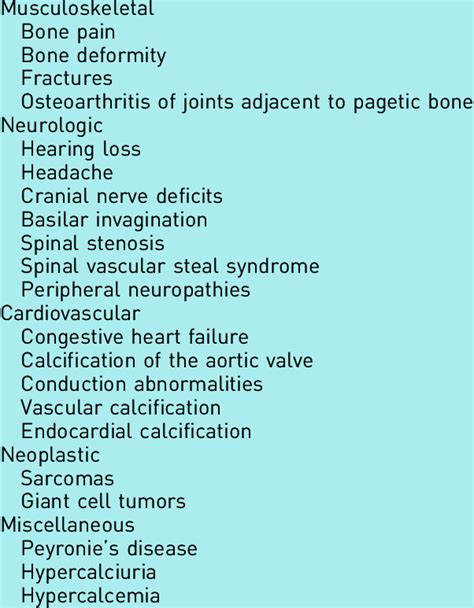Intro
Discover Paget Disease explained, a chronic bone condition causing enlarged and misshapen bones, affecting bone health, density, and structure, with symptoms, diagnosis, and treatment options for bone pain management and skeletal abnormalities.
Paget's disease of bone is a chronic condition that affects the way bones rebuild and repair themselves, leading to bones that are weakened and deformed. This condition is characterized by an abnormal breakdown and regrowth of bone tissue, resulting in bones that are larger and more misshapen than normal. The disease can affect any bone in the body, but it most commonly affects the pelvis, spine, skull, thighs, and lower legs.
The importance of understanding Paget's disease cannot be overstated, as it affects approximately 1% of people over the age of 55, with the risk increasing with age. If left untreated, Paget's disease can lead to a range of complications, including bone fractures, arthritis, and hearing loss. Furthermore, the disease can also increase the risk of developing other conditions, such as osteosarcoma, a type of bone cancer. Therefore, it is essential to recognize the signs and symptoms of Paget's disease and seek medical attention if they occur.
Paget's disease is often asymptomatic in its early stages, and many people may not realize they have the condition until they experience a complication, such as a bone fracture. However, as the disease progresses, people may start to notice a range of symptoms, including bone pain, joint pain, and limited mobility. In some cases, people may also experience neurological symptoms, such as numbness, tingling, and weakness, due to the compression of nerves by enlarged bones. By understanding the causes, symptoms, and treatment options for Paget's disease, people can take steps to manage their condition and prevent complications.
Paget's Disease Causes and Risk Factors

Genetic Factors
Genetic factors are thought to play a significant role in the development of Paget's disease. Several genes have been identified that may contribute to the condition, including the SQSTM1 gene, which codes for a protein involved in bone cell signaling. Mutations in this gene have been found in many people with Paget's disease, and are thought to disrupt normal bone cell function, leading to the abnormal breakdown and regrowth of bone tissue.Environmental Factors
Environmental factors, such as viral infections, may also play a role in triggering Paget's disease. Some research has suggested that paramyxoviruses, such as measles and respiratory syncytial virus, may be involved in the development of the condition. However, more research is needed to fully understand the relationship between viral infections and Paget's disease.Paget's Disease Symptoms and Diagnosis

- Bone pain: This is often the first symptom of Paget's disease, and can range from mild to severe.
- Joint pain: As the bones enlarge, they can put pressure on surrounding joints, leading to pain and stiffness.
- Limited mobility: As the bones become deformed, they can limit mobility and make everyday activities more difficult.
- Neurological symptoms: In some cases, people may experience neurological symptoms, such as numbness, tingling, and weakness, due to the compression of nerves by enlarged bones.
To diagnose Paget's disease, doctors may use a range of tests, including:
- Bone X-rays: These can help to identify any changes in bone shape or size.
- Bone scans: These can help to identify areas of abnormal bone activity.
- Blood tests: These can help to measure levels of certain enzymes and proteins in the blood, which can indicate bone turnover.
- Biopsy: In some cases, a biopsy may be necessary to confirm the diagnosis and rule out other conditions.
Bone X-rays
Bone X-rays are often the first test used to diagnose Paget's disease. They can help to identify any changes in bone shape or size, and can also help to rule out other conditions, such as osteoporosis or bone cancer.Bone Scans
Bone scans can help to identify areas of abnormal bone activity, which can indicate Paget's disease. During the test, a small amount of radioactive material is injected into the bloodstream, which accumulates in areas of high bone activity.Paget's Disease Treatment Options

The main treatment options for Paget's disease include:
- Medications: These can help to slow down bone turnover and reduce symptoms.
- Surgery: In some cases, surgery may be necessary to repair or replace damaged bones or joints.
- Lifestyle changes: Making lifestyle changes, such as maintaining a healthy weight, exercising regularly, and eating a balanced diet, can help to manage symptoms and prevent complications.
Medications
Medications are often the first line of treatment for Paget's disease. They can help to slow down bone turnover and reduce symptoms, such as pain and limited mobility. The most commonly used medications for Paget's disease include bisphosphonates, which can help to slow down bone resorption and reduce the risk of fractures.Surgery
In some cases, surgery may be necessary to repair or replace damaged bones or joints. This can help to relieve symptoms, such as pain and limited mobility, and can also help to prevent complications, such as bone fractures.Paget's Disease Complications and Prevention

- Bone fractures: As the bones become weakened, they can be more prone to fractures.
- Arthritis: The enlargement of bones can put pressure on surrounding joints, leading to arthritis.
- Hearing loss: The enlargement of bones in the skull can put pressure on the nerves responsible for hearing, leading to hearing loss.
- Osteosarcoma: In rare cases, Paget's disease can increase the risk of developing osteosarcoma, a type of bone cancer.
To prevent these complications, it is essential to manage Paget's disease effectively. This can include:
- Regular monitoring: Regular monitoring can help to identify any changes in the condition and prevent complications.
- Medications: Medications can help to slow down bone turnover and reduce symptoms.
- Lifestyle changes: Making lifestyle changes, such as maintaining a healthy weight, exercising regularly, and eating a balanced diet, can help to manage symptoms and prevent complications.
Bone Fractures
Bone fractures are a common complication of Paget's disease. As the bones become weakened, they can be more prone to fractures. To prevent bone fractures, it is essential to manage Paget's disease effectively, using medications and lifestyle changes to slow down bone turnover and reduce symptoms.Arthritis
Arthritis is another common complication of Paget's disease. The enlargement of bones can put pressure on surrounding joints, leading to arthritis. To prevent arthritis, it is essential to manage Paget's disease effectively, using medications and lifestyle changes to slow down bone turnover and reduce symptoms.What is Paget's disease of bone?
+Paget's disease of bone is a chronic condition that affects the way bones rebuild and repair themselves, leading to bones that are weakened and deformed.
What are the symptoms of Paget's disease?
+The symptoms of Paget's disease can vary depending on the bones affected and the severity of the condition, but can include bone pain, joint pain, limited mobility, and neurological symptoms.
How is Paget's disease diagnosed?
+Paget's disease is diagnosed using a range of tests, including bone X-rays, bone scans, blood tests, and biopsy.
What are the treatment options for Paget's disease?
+The treatment options for Paget's disease include medications, surgery, and lifestyle changes, such as maintaining a healthy weight, exercising regularly, and eating a balanced diet.
Can Paget's disease be prevented?
+While Paget's disease cannot be prevented, managing the condition effectively can help to prevent complications, such as bone fractures, arthritis, and hearing loss.
In conclusion, Paget's disease is a chronic condition that affects the way bones rebuild and repair themselves, leading to bones that are weakened and deformed. By understanding the causes, symptoms, and treatment options for Paget's disease, people can take steps to manage their condition and prevent complications. If you have any questions or concerns about Paget's disease, please do not hesitate to comment below or share this article with others who may be affected by this condition. Together, we can raise awareness and promote better understanding of this important health topic.
